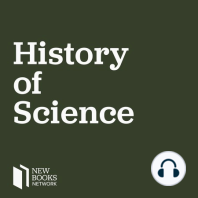68 min listen

Matthew James Crawford, “The Andean Wonder Drug: Cinchona Bark and Imperial Science in the Spanish Atlantic, 1630-1800” (U. Pittsburgh Press, 2016)
Matthew James Crawford, “The Andean Wonder Drug: Cinchona Bark and Imperial Science in the Spanish Atlantic, 1630-1800” (U. Pittsburgh Press, 2016)
ratings:
Length:
64 minutes
Released:
Feb 23, 2017
Format:
Podcast episode
Description
Matthew James Crawford’s new book is a fascinating history of an object that was central to the history of science, technology, and medicine in the early modern Spanish Atlantic world. The Andean Wonder Drug: Cinchona Bark and Imperial Science in the Spanish Atlantic, 1630-1800 (University of Pittsburgh Press, 2016) looks closely at the struggles of the Spanish Empire in the second half of the eighteenth century to control the cinchona tree and its bark, and traces the history of quina as a product of local, imperial, and commercial networks in [the] eighteenth-century Atlantic World. Science and empire were deeply intertwined in the Spanish Atlantic, and Crawford offers a window into the epistemic culture produced by Spanish colonial governance and resulting encounters across and within the Andean and Atlantic contexts. Part One of the book looks carefully at what it meant to know nature in the early modern Atlantic World. It traces the transformations of quina from a local Andean remedy into a botanical commodity and an imperial natural resource from the mid-seventeenth to mid-eighteenth centuries, showing how these transformations resulted from the bark’s integration into Andean, Atlantic, and imperial networks of circulation of people, texts, objects, and images. Part Two of the book explores several key conflicts in the late eighteenth century that emerged as the Spanish Crown tried to assert greater control over the tree and its bark. It’s a story that will be of interest to the histories of science, medicine, natural history, and early modernity!
Learn more about your ad choices. Visit megaphone.fm/adchoices
Learn more about your ad choices. Visit megaphone.fm/adchoices
Released:
Feb 23, 2017
Format:
Podcast episode
Titles in the series (100)
Roger Hart, “The Chinese Roots of Linear Algebra” (Johns Hopkins UP, 2011): Roger Hart‘s The Chinese Roots of Linear Algebra (Johns Hopkins University Press, 2011) is the first book-length study of linear algebra in imperial China, and is based on an astounding combination of erudition and expertise in both Chinese history and... by New Books in the History of Science